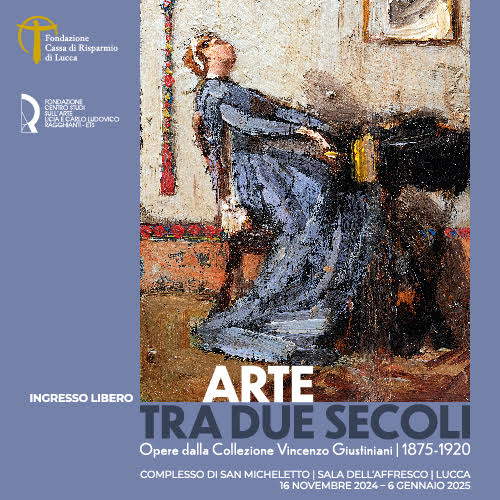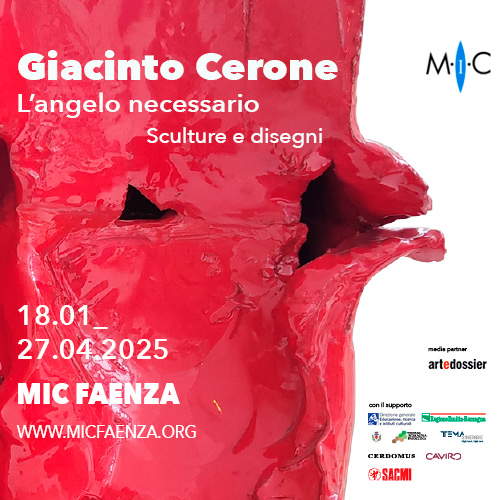Repatriated to Italy from the US 600 works of art worth an estimated 60 million euros
600 works of art repatriated from the United States of America by the Carabinieri per la Tutela del Patrimonio Culturale (TPC), with an estimated economic value of about 60 million euros, were presented today at theCentral Institute for Restoration in Rome. The assets were returned to Italy thanks to numerous investigations conducted by the Carabinieri Tutela Patrimonio Culturale Command with several national prosecutors’ offices, assisted by the New York District Attorney’s Office and the U.S.Homeland Security Investigations. These are in most cases antiques, archival, numismatic and especially archaeological goods from the period from the 9th century B.C. to the 2nd century A.D., the subject of clandestine excavations in south-central Italy and thefts from churches, museums and private individuals.
Among the recovered goods:
- 600 archaeological artifacts found to be the proceeds of theft from Italian state agencies or from illegal excavations, clandestine exports and receiving stolen goods. The assets were located in the U.S. both at the initiative of the TPC Command, but also as a result of their own investigations, carried out by the District Attorney’s Office and the HSI, offices that then seized the artifacts that ended up in the possession of well-known U.S. museum institutions, gallery owners, collectors and brokers in the sector, as well as well-known international traffickers. The goods, which refer to the time span from the 9th century B.C. to the 2nd century A.D., are historical-scientific evidence traceable to the Villanovan, Etruscan, Magna-Greek, Samnite, Apulian, and Roman-Imperial cultures from the regions of Latium, Campania, Apulia, Calabria, and Sicily.
- A silver tetradrachm from Naxos, 4th century B.C., depicting Dionysus on the obverse and Silenus on the reverse, the proceeds of illicit excavations that occurred prior to 2013 in Sicily and later clandestinely exported to the United Kingdom. The asset was located and seized in New York in 2023 where it was for sale for $500,000;
- A silver coin, a contorniato of Emperor Trajan, the proceeds of a 1978 theft from the Oliverian Archaeological Museum in Pesaro. Identified by the TPC Command at an auction house in Lancaster (Philadelphia, USA);
- Archaeological gold coins, traceable to various mints, from the July 3, 2009 theft from the Medagliere of the National Archaeological Museum in Parma. Spotted in auction houses in New York, Dallas, Los Angeles, Chicago and Puerto Rico, the coins were seized by the respective HSI offices, only to be permanently returned;
- A cuirass and two bronze heads dating from the 4th-3rd centuries B.C., located by the District Attorney’s Office in the possession of a well-known New York gallery owner, then seized as they were found to be the proceeds of clandestine excavations that took place in south-central Italy;
- An Umbrian bronzetto depicting a warrior, found in a well-known U.S. museum, the proceeds of a 1962 theft from an Italian museum. Evidence provided by this Command to the New York District Attorney’s Office allowed the recovery of the bronze statuette and an additional 39 valuable archaeological artifacts, which were found to be proceeds of clandestine excavations that took place in the 1990s in southern Italy;
- A bronze sculpture depicting a life-size Hellenistic prince from the 1st century B.C., the proceeds of clandestine excavations that occurred in the 1970s in southern Italy, located in New Jersey (United States). The work was recovered by Comando TPC along with 144 other objects, thanks to the cooperation of the New York District Attorney’s Office and the HSI;
- A mosaic (mosaic floor) depicting the myth of Orpheus enchanting wild animals with the sound of the lyre, mid-third to mid-fourth century AD, located by the District Attorney’s Office in the private collection of a well-known New York collector, found to be the proceeds of illicit excavations that took place in Sicily before 1991;
- Hundreds of masterpieces, of high economic value, looted by “grave robbers” all over the peninsula: Villanovan vases, Etruscan buccheri and painted slabs, Apulian amphorae and craters, silver cups, marble and bronze heads, entire funerary outfits uprooted from their original context;
- An oil-on-canvas painting depicting an Assumption Madonna attributed to painter Giuseppe Pappini and dating from 1851, the proceeds of the May 2, 2002 theft from the Benedictine Abbey in the province of Pordenone, which was in the possession of a Dallas gallery owner, where it was seized by HSI and returned to the TPC Command;
- A pair of seventeenth-century, oval oil on canvas paintings depicting a still life (flowers), removed on Feb. 25, 1997, from a private home in Cucciago (Como), located in a well-known Los Angeles auction house, seized by HSI and later returned to the TPC Command;
- An oil-on-canvas painting depicting A Mediterranean harbor scene, attributed to Dutch artist Hendrik Van Minderhout (1632-1696), the proceeds of a 2004 theft in the province of Salerno from a private individual. Located by the TPC Command in a gallery in New Orleans;
- A manuscript parchment known as the Waldipertus Land Grant Document, Benevento, Italy, 821, (Inventory Ark I 13);
- A manuscript parchment known as Martinus Land Sale Document, epoch 823, Benevento, Italy (Inventory Ark I 37);
- Archival and bibliographic material from the period between 1800 and 1979, removed in 2004 from the historical archive in the province of Pescara, later identified in the collection of a gallery owner in Binghamton, New York, seized by HSI and returned to the TPC Command.
For its investigation activities, the Carabinieri Tutela Patrimonio Culturale Command makes use of the database of illicitly stolen cultural property, which is the world’s largest archive of stolen art goods, with information on more than 7 million objects surveyed, of which 1,315,00 are to be recovered. An innovative tool using Artificial Intelligence, called the “Stolen Works Of Art Detection System” (S.W.O.A.D.S.) is currently active, processing seamless web and social networks searches for stolen works of art.
According to the latest report on the activity carried out in 2023, released in recent days by the TPC, 105,474 thousand art goods with an estimated value of more than 264 million euros were recovered.
The presentation was attended by Undersecretary for Culture, Gianmarco Mazzi; Commander of the Carabinieri Tutela del Patrimonio Culturale, Gen. D. Francesco Gargaro; the head of the Manhattan Prosecutor’s Office, Col. Matthew Bogdanos; Commander of the Carabinieri’s Mobile and Specialized Units, Gen. C.A. Massimo Mennitti; and U.S. Ambassador to Rome, Jack Markell. Present, among others, were MiC Museums General Director Massimo Osanna and MiC Archaeology, Fine Arts and Landscape General Director Luigi La Rocca.
The temporary installation of the works was taken care of by the General Directorate of Museums, together with the Carabinieri TPC.
Statements
“Today is a beautiful day for the nation’s cultural heritage for the return home of hundreds of works of art illegally stolen and exported abroad,” said Culture Minister Gennaro Sangiuliano. “Thanks to the irreplaceable action of the Carabinieri for the Protection of Cultural Heritage, a true investigative excellence of the Nation, together with the valuable collaboration of the U.S. authorities, we record a further success on this front. Bringing these assets back to Italy will also make it possible to heal so many wounds that have opened over the years in the territories where they were stolen, depriving communities of important pieces of their identity. Fundamental, even in this long and articulated activity, has been the MiC’s Database of Illicitly Stolen Cultural Assets, which represents the world’s largest archive of stolen art assets, with information on more than 7 million objects surveyed, including more than 1.3 million works to be searched.”
“The return to Italy of cultural goods of such importance, both in terms of their numerical consistency and historical and artistic value, is another significant achievement,” added Undersecretary for Culture Gianmarco Mazzi. “In addition to being priceless works of art, they represent the high expression of our history, culture and national identity. Today’s ceremony is, moreover, a concrete testimony to the strength of international cooperation with the United States of America.”
“A new chapter in the exciting history of cultural heritage recovery is being written today thanks to the extraordinary work of the Carabinieri TPC Command,” said Massimo Osanna, Director General of Museums. "The Directorate General for Museums will be proud to be able to accompany, together with the Directorate General for Archaeology, Fine Arts and Landscape, the journey of these extraordinary works to the museum institutions that will be their new home. From the large bronze cauldron of the Orientalizing period decorated with griffin heads to the painted Etruscan slabs, from the figurative pottery of Athenian production to precious objects such as the gold crown and chiseled silver cups, from the extraordinary bronze statue of a Hellenistic prince to the Roman mosaic, from the imperial period, with Orpheus and animals, these striking testimonies constitute a varied narrative of our cultural heritage in its many fascinating aspects. In the coming days, students from a number of educational institutions will be able to visit the temporary exhibit of artifacts set up at the ICR, in order to continue to stimulate young people’s sensitivity to fundamental issues such as legality and the value of our heritage."
“Operation Symes, thanks to the close activity in close synergy by the Carabinieri TPC Command and the ABAP General Directorate, with the legal support of the State Advocacy since 2007, has enabled the recovery and repatriation of a multitude of priceless archaeological artifacts proceeds from illegal clandestine excavation activities,” stressed Luigi La Rocca, Director General of Archaeology, Fine Arts and Landscape. “This is a veritable treasure trove of about 900 pieces including sculptures, jewelry, small bronzes, red-figure and black-figure ceramics, traceable to the figure of Robin Symes, a well-known international trafficker of ancient artifacts, a considerable part of which was recovered in the United States thanks to cooperation with the New York Public Prosecutor’s Office. Despite the destruction of commercial documentation related to the international trade in archaeological material, the Authorities involved have reconstructed the map of clandestine trafficking of the material excavated and exported from Italian territory, the subject of the extraordinary recovery in favor of the Ministry of Culture. A new important recovery of ancient works of art that after delivery to the Abap General Directorate and then to the Ministry of Culture will be assigned to the museum institutions of the places of origin and returned to public enjoyment.”
“We celebrate today a new success achieved by the Carabinieri per la Tutela del Patrimonio Culturale with the repatriation to Italy of hundreds of valuable works of art, the result of the well-established investigative, judicial and diplomatic cooperation between the TPC, the judiciary and the U.S. federal and state law enforcement authorities,” said General Francesco Gargaro, Commander of the TPC.
“Italy has an incredible cultural and artistic heritage. Its protection requires care and vigilance. The United States is strongly committed to safeguarding and preserving cultural heritage around the world. Since 2001, the United States has fulfilled a bilateral agreement with Italy to combat trafficking in antiquities, and together we continue to work to protect, preserve and promote culture and the arts,” concluded U.S. Ambassador to Rome Jack Markell.
Photo by Emanuele Antonio Minerva © Ministry of Culture
 |
| Repatriated to Italy from the US 600 works of art worth an estimated 60 million euros |
Warning: the translation into English of the original Italian article was created using automatic tools. We undertake to review all articles, but we do not guarantee the total absence of inaccuracies in the translation due to the program. You can find the original by clicking on the ITA button. If you find any mistake,please contact us.





























